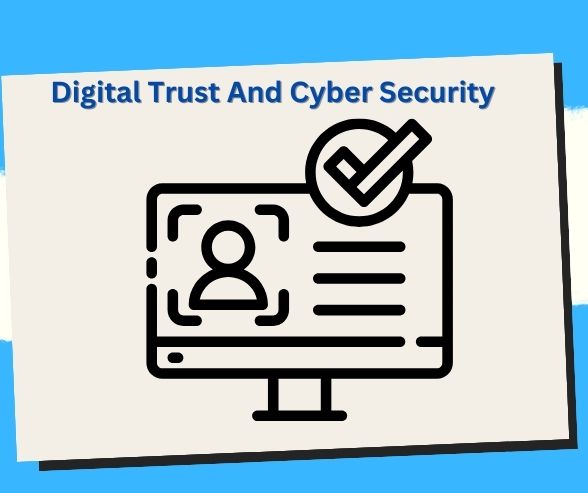
Mastering Security: A Guide on How to Design a Robust Password Policy for User Authentication
Craft an unbreakable digital fortress! Explore our tutorial on crafting a secure password policy, providing unparalleled authentication for users in the digital realm.
Crafting Fort Knox: A Practical Guide to Designing a Secure Password Policy for User Authentication 

In the digital age, where cyber threats loom large, the first line of defense is a robust password policy. Designing a secure password policy is not just about meeting compliance standards but about fortifying your digital fortress. Join us on this journey as we break down the essential steps to create a password policy that stands strong against the tide of cyber adversaries.
 Building Blocks of a Secure Password Policy
Building Blocks of a Secure Password Policy
Understanding the Importance of a Secure Password Policy
Before we dive into the intricacies of designing a secure password policy, let’s grasp the fundamental reasons behind its significance.
 Step 1: Set Clear Password Requirements
Step 1: Set Clear Password Requirements
Define clear and specific password requirements to guide users. This includes minimum length, complexity (use of uppercase, lowercase, numbers, and symbols), and expiration policies.
 Step 2: Educate Users on Password Best Practices
Step 2: Educate Users on Password Best Practices
Develop comprehensive user education materials to ensure everyone understands the importance of strong passwords and the role they play in maintaining security.
 Step 3: Enforce Regular Password Changes
Step 3: Enforce Regular Password Changes
Implement a policy that requires users to change their passwords regularly. This reduces the risk associated with long-term use of the same password.
 Step 4: Implement Multi-Factor Authentication (MFA)
Step 4: Implement Multi-Factor Authentication (MFA)
Enhance your password policy by implementing Multi-Factor Authentication (MFA). This adds an additional layer of security, requiring users to provide multiple forms of identification.
 Step 5: Discourage Password Sharing
Step 5: Discourage Password Sharing
Educate users about the dangers of password sharing and implement policies that discourage this practice. Passwords are personal; sharing them weakens security.
 Step 6: Use Account Lockout Mechanisms
Step 6: Use Account Lockout Mechanisms
Implement account lockout mechanisms to deter brute force attacks. After a certain number of failed login attempts, user accounts should be temporarily locked to prevent unauthorized access.
 Step 7: Encrypt Stored Passwords
Step 7: Encrypt Stored Passwords
Ensure that passwords are stored securely using encryption algorithms. This protects user credentials in case of a data breach.
 Step 8: Regularly Audit User Passwords
Step 8: Regularly Audit User Passwords
Conduct regular audits of user passwords to identify weak or compromised credentials. Prompt users to update their passwords if any security issues are detected.
 Step 9: Provide Password Recovery Options
Step 9: Provide Password Recovery Options
Offer secure and user-friendly password recovery options. This ensures that users can regain access to their accounts in a secure manner if they forget their passwords.
 Step 10: Stay Informed About Emerging Threats
Step 10: Stay Informed About Emerging Threats
Regularly update your password policy based on emerging threats and best practices. A dynamic password policy is crucial for adapting to evolving cybersecurity challenges.
 Key Takeaways
Key Takeaways
- Clear Password Requirements: Clearly define the parameters for strong and secure passwords.
- User Education is Key: Educate users about the importance of password security and best practices.
- Regular Password Changes: Implement policies that require users to change their passwords regularly.
- Embrace Multi-Factor Authentication: Enhance security by implementing Multi-Factor Authentication.
- Discourage Password Sharing: Educate users on the risks associated with sharing passwords.
- Account Lockout Mechanisms: Deter brute force attacks by implementing account lockout mechanisms.
- Encrypt Stored Passwords: Store passwords securely using robust encryption algorithms.
- Regular Password Audits: Conduct regular audits to identify and address weak or compromised passwords.
- Secure Password Recovery Options: Provide users with secure options for password recovery.
- Stay Informed About Threats: Continuously update the password policy based on emerging threats and industry best practices.
 Frequently Asked Questions
Frequently Asked Questions
- How Often Should Users Change Their Passwords?
The frequency of password changes depends on the organization’s policies. Common intervals are every 60 to 90 days. - Is Multi-Factor Authentication Necessary if I Have a Strong Password Policy?
While a strong password policy is crucial, Multi-Factor Authentication provides an additional layer of security and is highly recommended. - Can I Use the Same Password Across Multiple Accounts?
It’s strongly advised against using the same password across multiple accounts. If one account is compromised, others become vulnerable. - What Should I Do If I Forget My Password?
Secure password recovery options should be in place. Users can follow the designated recovery process to regain access. - Why Should Password Sharing Be Discouraged?
Password sharing compromises security and makes it challenging to track and manage access to sensitive information. - How Long Should a Temporary Account Lock Last?
Temporary account locks can vary, but common durations are 15 to 30 minutes. The goal is to deter unauthorized access without causing significant disruption. - What is the Role of Encryption in Password Security?
Encryption ensures that even if a database is breached, the stored passwords remain unreadable and protected. - Can I Trust Password Managers?
Reputable password managers use robust encryption and security measures. Using a trusted password manager is generally considered secure. - Are There Alternatives to Passwords for Authentication?
Biometric authentication, like fingerprints or facial recognition, provides alternatives to traditional passwords for user authentication. - How Can I Keep My Password Policy Updated?
Stay informed about emerging threats by regularly monitoring cybersecurity news, attending industry conferences, and collaborating with cybersecurity experts.
Top 10 Best Resources on Password Policy for User Authentication
General Information:
1. National Institute of Standards and Technology (NIST
https://pages.nist.gov/800-63-3/sp800-63b.html
NIST Special Publication 800-63B provides recommendations for creating strong password policies, including minimum length, character types, and expiration rules.
2. Microsoft: Create strong passwords for your Microsoft account
Microsoft explains password complexity requirements and best practices for creating strong passwords.
3. Google: Create strong passwords for your Google Account
https://support.google.com/accounts/answer/3024190?hl=en
Google’s guide on creating strong passwords, including best practices and avoiding common mistakes.
Password Policy Best Practices and Examples:
4. Carnegie Mellon University: How to Write a Strong Password Policy
https://www.cmu.edu/iso/governance/guidelines/password-management.html
Provides detailed guidelines for creating effective password policies, including examples and common pitfalls to avoid.
5. National Cyber Security Alliance: Choosing Strong Passwords
https://staysafeonline.org/online-safety-privacy-basics/passwords-securing-accounts/
Offers tips on creating strong passwords and common mistakes to avoid, emphasizing user education alongside policy implementation.
6. Center for Internet Security (CIS): Controls for Secure Passwords
https://www.cisecurity.org/insights/white-papers/cis-primer-securing-login-credentials
CIS Controls provides actionable recommendations for implementing secure password policies, including minimum length, complexity, and frequency of change.
Advanced Considerations and Resources:
7. Password Hashing Best Practices
https://cheatsheetseries.owasp.org/cheatsheets/Password_Storage_Cheat_Sheet.html
Explains password hashing techniques and best practices for secure storage, crucial for protecting user data even if passwords are compromised.
8. NIST Digital Identity Guidelines: Multi-Factor Authentication
https://www.nist.gov/itl/smallbusinesscyber/guidance-topic/multi-factor-authentication
Discusses the role of multi-factor authentication (MFA) in enhancing password security, layering an additional security factor beyond just the password.
9. National Institute of Standards and Technology (NIST): Password Strength Meters
https://pages.nist.gov/800-63-3/sp800-63b.html
Discusses the use of password strength meters and their limitations, emphasizing the importance of balancing usability with security.
Cybersecurity & Infrastructure Security Agency (CISA): Top 25 Most Common Passwords
https://www.cisa.gov/secure-our-world/use-strong-passwords
CISA lists commonly used passwords to avoid, highlighting the importance of user education and awareness alongside policy creation.
Remember, creating a strong password policy is just one step in securing user authentication. Regularly review and update your policy, educate users on best practices, and implement additional security measures like MFA to ensure a comprehensive approach to user account protection.
Conclusion
Designing a robust password policy for user authentication is not just a technical necessity; it is a foundational element in the fortress of digital security. As our reliance on digital platforms grows, the importance of safeguarding user accounts through effective password policies cannot be overstated.
This comprehensive guide has equipped you with the knowledge and strategies needed to design a password policy that stands resilient against modern cyber threats. By implementing these principles, you are not only fortifying your digital environment but also instilling confidence in users that their accounts are shielded with the utmost care.
Remember, a well-crafted password policy is not static; it evolves with the dynamic landscape of cybersecurity. As you design and refine your password policy, stay informed about emerging threats, educate users on best practices, and foster a culture of proactive security.
As you embark on the journey to master the art of designing a robust password policy, let security be a guiding principle. Stay vigilant, adapt to evolving threats, and let your password policy be a testament to your commitment to user authentication and the overarching goal of creating a secure digital environment.
 Key Phrases
Key Phrases
- Password Security Best Practices
- Multi-Factor Authentication Implementation
- Account Lockout Policies
- Secure Password Recovery
- User Education on Passwords
- Dynamic Password Policy
- Encryption for Stored Passwords
- Regular Password Auditing
- Secure Password Change Process
- Adapting to Emerging Threats
 Best Hashtags
Best Hashtags
- #PasswordSecurity
- #CyberSecurityTips
- #MultiFactorAuthentication
- #SecureAuthentication
- #DataProtection
- #SecurePasswords
- #UserEducation
- #DigitalSecurity
- #BiometricAuthentication
- #DynamicPasswordPolicy
Save/Share this story with QR CODE
Disclaimer
This article is for informational purposes only and does not constitute endorsement of any specific technologies or methodologies and financial advice or endorsement of any specific products or services.
 Need to get in touch?
Need to get in touch?

We appreciate your reading. 
1.) 

Your DONATION will be used to fund and maintain NEXTGENDAY.com
Subscribers in the Philippines can make donations to mobile number 0917 906 3081, thru GCash.
3.) 
4.) 
AFFILIATE PARTNERS

World Class Nutritional Supplements - Buy Highest Quality Products, Purest Most Healthy Ingredients, Direct to your Door! Up to 90% OFF.
Join LiveGood Today - A company created to satisfy the world's most demanding leaders and entrepreneurs, with the best compensation plan today.

 Business, Finance & Technology
Business, Finance & Technology





